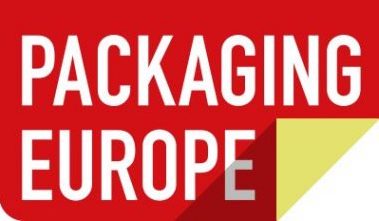In a special Augmented Reality edition of Packaging Europe, editor Libby White interviews Jonathan Barrowman (CEO of Gorilla in the room) about the future of AR in the packaging industry and the benefits to consumer research.
Can you give me your insights into the development and application of AR for the packaging industry within the last few years?
Before starting Gorilla in the room, I worked with P&G, Coca-Cola, Nestlé, Carlsberg and PepsiCo to bring their physical packaging to life with AR content. A call-to-action on packaging prompts consumers to download an AR mobile app which turns static packaging into interactive content. From videos, games, recipes and competitions to vouchers and e-commerce, brands turn their biggest owned asset (millions of products on supermarket shelves and in kitchen cupboards) into a consumer engagement channel. It does however require advanced planning as a call-to-action on packaging (e.g. download app, scan pack, discover recipes) is valuable real estate which needs to be built into the design and manufacturing process.
What do you expect from the next few years?
Whilst millions of daily users on SnapChat, Amazon and Facebook use AR features, the hurdle for non-durable consumer goods companies is asking people to download a mobile app for products they don’t consume daily. On average, only 1% of people will read the packaging CTA and download the AR app. Web AR will remove the need for an app by enabling mobile browsers (Chrome, Firefox etc) to deliver AR experiences by simply pointing your smartphone camera at packaging to unlock interactive content.
What are the possibilities AR brings to the packaging industry?
The potential to go beyond advertising and entertainment and into provenance and recycling is significant. As consumers become more environmentally conscious, AR enables them to scan packaging with their mobile (at the point of purchase) to see 3D holograms of producers talking about ethical farming, interact with graphs showing ingredients and (at the point of consumption) to scan a product with your mobile to know whether it’s locally recyclable. The immediacy of mobile AR places consumers in control of their purchase decisions.
How can it support and complement market and/or consumer research?
Gorilla in the room was formed to address the challenge that 85% of new FMCG goods fail (Nielsen) despite consumer goods companies spending $8.9 billion a year on consumer research (Esomar). Behavioural economics highlights the flaws in traditional pack research where people are asked to look at pictures or mock-ups of new pack designs (on a computer screen or in a focus group) and say which they prefer. It isn’t a realistic representation of people’s point-of-purchase decisions because it’s a flat 2D image. AR allows consumers to look at a realistic 3D replica of the product in the real world (on their kitchen counter, on a supermarket shelf etc) and view it from every angle. Our research shows that people find 3D AR products 3.5 times more realistic than 2D flat images and therefore packaging companies can make more confident decisions about which pack will sell in the real world.
What are the advantages of immersive research through AR?
In addition to more realistic research results, our mobile platform enables brands and researchers to quickly and cost effectively share new pack designs with thousands of respondents (people recruited to take part in research). Respondents use their mobile to place a realistic 3D AR replica of the product in the real world, view it from every angle and dynamically change the pack artwork until they’ve selected their preferred pack design. Clients therefore get qualitative insights at quantitative scale to make better predictions about which new pack design will sell. Importantly, 100% of respondents download the AR app because they’re being paid to complete the research (compared to 1% of consumers as mentioned above).
What valuable insights can you gain from applying AR to market research? Can you tell me about the methodologies you apply?
We specifically developed AR pack tests for the packaging industry so it can be added to any research on new pack designs. In addition to data on which pack design people ‘like’ we’re starting to map and measure respondent interactions with 3D AR packs e.g. dwell time on particular designs, whether they zoomed into a particular feature, the area of the pack they most liked etc. It’s like eye-tracking in AR and it will herald new behavioural data insights for the packaging industry.
Do you think augmented reality is a passing gimmick or a gamechanger for the packaging industry?
The immersive technology industry (AR and VR) is predicted to exceed $20 billion this year (IDC) with Google, Apple, Microsoft, Facebook and others developing new AR products and services. Tim Cook (the CEO of Apple) thinks AR will be as impactful as the iPhone and Apple tend to get these things right. From our perspective, AR solves an underlying issue with traditional pack research and it’s a gamechanger in the competitive packaging sector as it provides better insight on which pack design will sell. This is especially critical as once a new pack has been manufactured and distributed the impact on sales is impossible to change.
The Future Belongs to the Curious online article by Packaging Europe.


Recent Comments